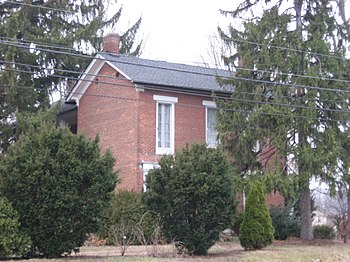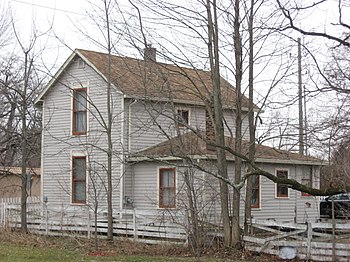 |
| A restored section of the in the town of Delphi in . Photo looks northeast from Washington Street. (Photo credit: Wikipedia) |
 |
| The St. Joseph River widens as it flows west through Elkhart. (Photo credit: Wikipedia) |
 |
| English: Front of the , located at 6620 N. Michigan Road in , , . Built in 1852, it is listed on the . (Photo credit: Wikipedia) |
 |
| English: Side and rear of the , located at 4702 N. Michigan Road in , , . Built in 1866, it is listed on the . (Photo credit: Wikipedia) |
When Indiana Indiana New Albany
and Vincennes National Road Indiana Indianapolis National Road
The National
Road Maryland
and ended in Stylus Missouri Indiana
The National
Road Richmond
to the new state capital Indianapolis and ended
at Terre Haute Indiana Michigan
Road
In 1826 the Pottawatomie Indians gave up land by signing
Mississinawa Treaty that would make possible a road to run from the Ohio River
in the south to Lake Michigan in the north.
The long established river town of Madison
Indiana
A state commission in 1828 selected the route from Indianapolis to Lake Michigan .
The trail head of road was to be a harbor in Lake Michigan .
Surveying for the road began in 1828 and most of the road was completed by
1834.
The major flaw of the original plan was it did not
consider some natural obstacle to a straight route .The Kankakee Swamp Logansport
Indiana South
Bend Indiana ) and then west to Michigan City and Lake Michigan .
The southern branch of Michigan Road Madison Indiana Michigan Road Greensburg Indiana
and from there straight to Indianapolis Indianapolis
from 34 counties even if the road itself only ran through 14 Indiana Michigan Road Michigan
None of the hardships of travel on Michigan Michigan Michigan Road Indiana Michigan Road Michigan Rd.
The story of Michigan
Road Indiana
is much like the early story of Indiana Michigan Road



No comments:
Post a Comment